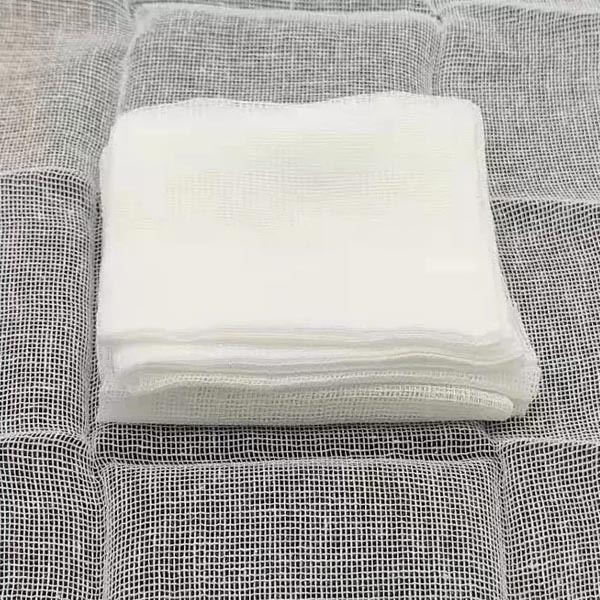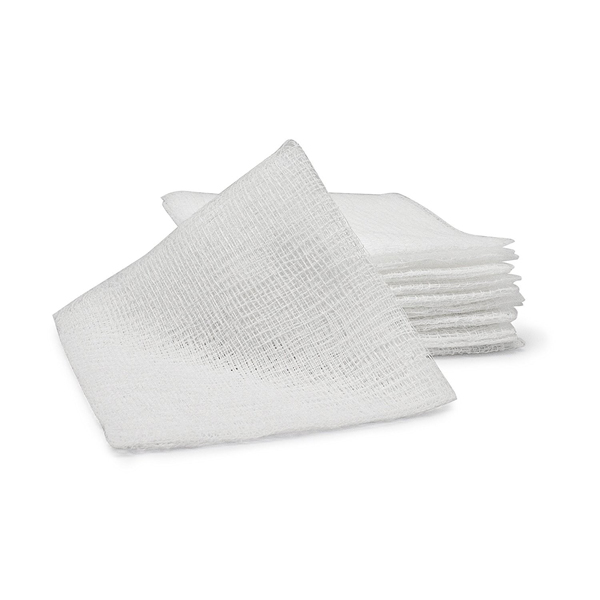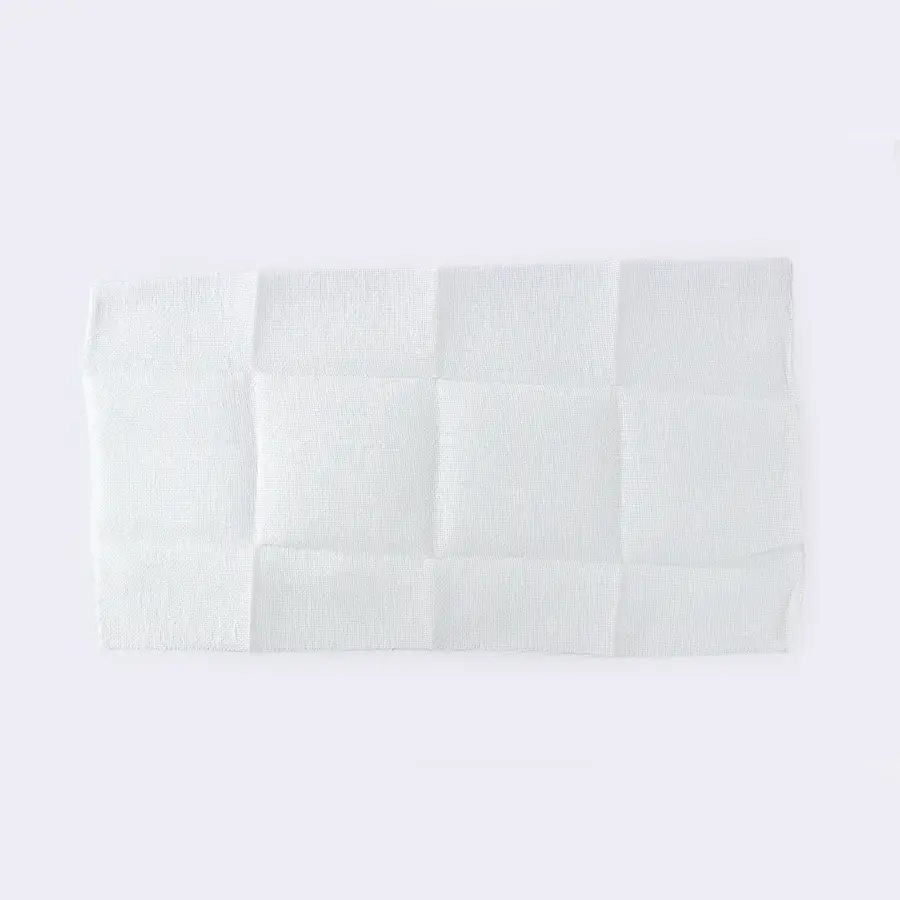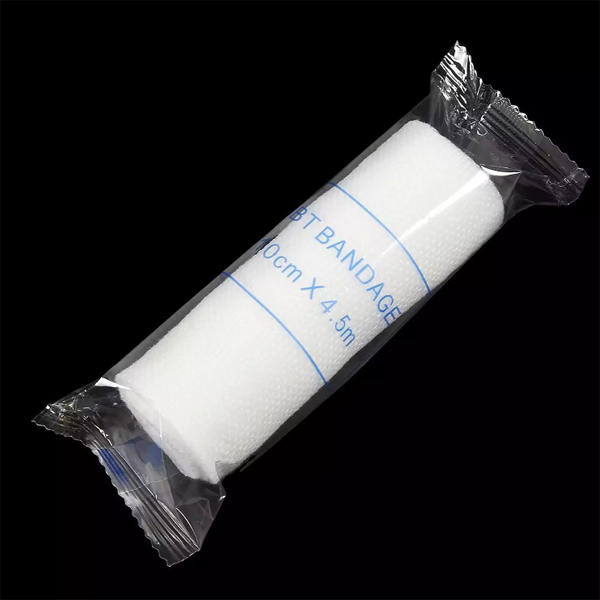Gauze pads are fundamental components in medical settings, from complex surgical procedures in hospitals to basic first aid applications at home or in clinics. Understanding the differences between sterile gauze and non-sterile gauze, their appropriate uses, and quality indicators is crucial for healthcare professionals and procurement managers like Mark Thompson. This article delves into the world of medical gauze, exploring types, applications, and what to look for when sourcing these essential wound care supplies. Read on to ensure you’re making informed decisions for patient safety and effective treatment, leveraging insights from a seasoned manufacturer in the medical field. We’ll cover everything from basic dressing needs to specific requirements for sterile gauze pads used in sensitive procedures.
What Exactly Are Gauze Pads and Why Are They Essential in Wound Care?
Gauze pads are squares or rectangles of absorbent material, typically cotton or a synthetic blend, used extensively in medicine. Think of them as the workhorses of wound care. Their primary functions are to absorb exudate (like blood or pus) from a wound, provide a protective barrier against contamination, cushion the injured area, and facilitate the healing process. Whether it’s a minor scrape managed with a first aid kit or a significant surgical incision requiring careful dressing, gauze pads play a vital role.
Their versatility is unmatched. Gauze pads can be used as a primary dressing placed directly onto a wound or as a secondary dressing to hold other layers, like a non-adherent pad, in place. They are designed for absorption and protection. Simple in appearance, the construction and type (whether sterile gauze or non-sterile) dictate their specific applications. For anyone involved in patient care or medical supply procurement, understanding the fundamental purpose of gauze pads is the first step towards effective wound management. They are truly an essential first-aid supply.
The effectiveness of gauze pads stems from their material properties – typically breathable and absorbent. This allows air to circulate, which can aid healing, while wicking moisture away from the wound bed. Different types, like woven gauze or non-woven sponges, offer varying levels of absorbency and softness. Gauze pads are designed to be gentle on the skin while providing the necessary protection and cushion for a healing wound.

Sterile Gauze vs. Non-Sterile Gauze: What’s the Crucial Difference?
This is perhaps the most critical distinction to understand when selecting gauze pads. The difference lies entirely in the sterilization process and packaging. Sterile gauze pads undergo a rigorous sterilization process (like gamma irradiation, ethylene oxide, or steam) to eliminate all microorganisms, including bacteria, viruses, and spores. They are then individually wrapped in sealed packaging to maintain this sterility until the point of use. This makes sterile gauze the only appropriate choice for direct contact with open wounds, surgical sites, or any procedure where breaching the skin’s barrier occurs. Using non-sterile material on an open wound introduces a high risk of infection.
Non-sterile gauze pads, on the other hand, have not undergone this terminal sterilization process. While they are manufactured in clean conditions, they are not guaranteed to be free of microorganisms. Non-sterile gauze is often packaged in bulk (e.g., sleeves of 100 or 200 pads) and is significantly less expensive. Its applications are limited to situations where sterility is not paramount. This includes padding or cushion for closed wounds, general cleaning (prep or scrub tasks), applying ointments to intact skin, or providing secondary dressing support over a primary sterile dressing. Never use on open wounds.
Here’s a simple comparison:
| Feature | Sterile Gauze Pads | Non-Sterile Gauze Pads |
|---|---|---|
| Sterility | Guaranteed sterile until opened | Not sterile |
| Packaging | Individually wrapped, sealed | Often bulk packaged (sleeves/bags) |
| Primary Use | Direct contact with open wounds, surgery | Closed wounds, cleaning, secondary layers |
| Infection Risk | Minimal (if used properly) | High (if used on open wounds) |
| Cost | Higher | Lower |
Understanding this difference between sterile and non-sterile gauze is non-negotiable for patient safety and regulatory compliance in medical facilities. Using a non-sterile gauze sponge where a sterile gauze pad is required can lead to serious complications.
How Do You Choose the Right Size and Ply for Gauze Pads?
Selecting the correct size and ply (thickness) for gauze pads depends heavily on the specific application and the nature of the wound. Size is usually straightforward – the gauze pad should be large enough to completely cover the wound with a slight overlap onto the surrounding healthy skin. Common sizes include 2" x 2", 3" x 3", and the very common 4 x 4 inches (gauze pads 4×4 are a staple). Using a pad that’s too small won’t provide adequate coverage or absorption, while one that’s excessively large can be wasteful and potentially bulky.
"Ply" refers to the number of layers of gauze material folded together to create the pad or sponge. Common options include 8-ply, 12-ply, and sometimes higher. A higher ply count generally means greater thickness, cushion, and absorbency. For wounds with heavy exudate, a higher ply (12 ply or more) sterile gauze pad is preferable. For basic cleaning, light wounds, or applying medication, a lower ply (like 8 ply) might suffice. For example, a 4 x 4 12-ply sterile gauze sponge offers substantial absorbency for moderate drainage.
Consider the task: Is it for gentle cleansing (prep)? A lower ply non-sterile sponge might work. Is it for packing a deep wound? A sterile gauze packing strip or a higher ply sterile gauze pad might be needed. Is it for covering a large abrasion? A larger size like 4 x 4 or even gauze rolls might be better. The choice impacts both clinical effectiveness and cost-efficiency, key concerns for procurement managers like Mark. Always assess the wound size and exudate level to choose the most appropriate gauze pads.

When Should Sterile Gauze Pads Be Used?
The rule is simple: Sterile gauze pads must be used anytime the protective barrier of the skin is broken or potentially compromised, and the risk of infection needs to be minimized. They are essential for direct contact with open wounds. This includes surgical incisions, lacerations, abrasions, burns, and any procedure involving injections or insertion of medical devices. Sterile gauze creates a clean barrier between the vulnerable tissue and the environment.
Think about situations encountered daily in hospitals and clinics: changing a surgical dressing, packing a wound, covering an IV insertion site, or performing delicate procedures. In all these cases, sterile gauze pads or sterile pads are the standard of care. They are individually wrapped to ensure they remain uncontaminated until opened, usually right before application to the wound. Even for seemingly minor first aid situations involving broken skin, using a sterile gauze pad from your first aid kit is always the safest approach.
Using non-sterile gauze in these situations would introduce bacteria and other pathogens directly into the wound, significantly increasing the risk of infection, delayed healing, and other complications. Therefore, sterile gauze pads are indispensable for any invasive procedure or direct wound dressing application. They are a cornerstone of aseptic technique in the medical field. It’s critical that staff are trained to recognize when sterile gauze is required and to handle it properly to maintain its sterility. These pads are used specifically to prevent infection in vulnerable wound sites.
Are Non-Sterile Gauze Pads Safe for First Aid?
Non-sterile gauze pads have their place in first aid and general medical use, but only when sterility is not a requirement. They are perfectly safe and cost-effective for applications on intact skin or for situations where the risk of introducing infection into a deep wound is not present.
Common safe uses for non-sterile gauze include:
- Applying ointments or creams to rashes or unbroken skin.
- General cleaning of skin surfaces (prep).
- Providing padding or cushion over a closed wound or injury (e.g., under a bandage or splint).
- Acting as a secondary dressing layer over a primary sterile gauze pad to add bulk or absorbency, without directly touching the open wound.
- Cleaning up minor spills or fluids in a clinical setting.
- Basic first-aid tasks not involving open skin breaks.
However, it is crucial never to use non-sterile gauze pads directly on an open wound, burn, or surgical site. While convenient and economical for certain tasks, their use must be appropriate to avoid causing harm. For a standard first aid kit, it’s wise to include both sterile gauze pads (for open wounds) and non-sterile gauze pads or gauze sponges (for cleaning, padding, and secondary dressing). Proper labeling and staff training are key to ensure correct general use.

Understanding Different Gauze Weaves and Materials: Woven vs. Non-Woven
Gauze pads are primarily categorized by their construction: woven or non-woven. Woven gauze, the traditional type, is made from cotton threads woven together like fabric. This weave creates a strong, durable material. Standard woven gauze (like USP Type VII gauze) is known for its strength and absorbency, making it suitable for various wound care tasks, including cleaning, packing, and covering wounds. However, standard woven gauze pads can sometimes leave lint behind and may adhere to drying wounds, potentially causing pain upon removal. Variations like crinkle weave (found in some stretch gauze rolls) offer more cushioning and conformity. Look for products with folded edges to minimize linting.
Non-woven gauze pads (often called non-woven sponges) are typically made from synthetic fibers (like rayon or polyester blends) or sometimes cotton fibers that are pressed together rather than woven. This construction often results in a softer, smoother sponge that produces less lint. Non-woven gauze pads are often highly absorbent – sometimes more so than traditional woven gauze of the same weight. They are generally less likely to stick to wounds, offering potential for more comfortable, painless removal. Because of their softness and low linting, they are excellent for applying ointments, prepping skin, and as a gentle wound dressing.
The choice between woven and non-woven gauze pads often depends on the specific task, wound characteristics, and clinician preference. Both are available as sterile gauze and non-sterile gauze. For sensitive wounds or areas where lint could be problematic (like ophthalmology), non-woven sponges might be preferred. For tasks requiring strength, like vigorous scrubbing or packing, traditional woven gauze might be the choice. Many facilities stock both types to cover a range of wound care needs.
Why is Proper Application of Gauze Pads Critical for Effective Wound Healing?
Simply choosing the right type of gauze pad isn’t enough; proper application is paramount for effective wound healing. Incorrect application can negate the benefits of the dressing, potentially hindering healing or even causing harm. First, always ensure hands are clean or gloved, especially when handling sterile gauze pads. For sterile applications, maintain aseptic technique throughout the dressing change.
The gauze pad should cover the entire wound surface, extending slightly onto the surrounding healthy skin. It should lie flat against the wound without bunching or wrinkling, which could create pressure points or allow exudate to pool. If using gauze pads for absorption, ensure there’s enough material (consider size and ply) to manage the expected drainage without becoming saturated too quickly, which can lead to leakage and skin maceration.
Securing the gauze pad is also vital. Use appropriate medical tape, a conforming bandage (like a stretch gauze roll), or an adhesive dressing border. The securing method should hold the pad firmly in place without constricting circulation or causing discomfort. For wounds prone to sticking, a non-adherent primary layer might be placed under the gauze pad, or a specific non-adhesive gauze pad could be chosen for easier, painless removal. Regular assessment and timely changes of the wound dressing are also key components of proper wound care. Following correct procedures ensures the gauze pads effectively protect the wound, manage exudate, and promote a healing environment.
What Quality Indicators Should Procurement Managers Look For in Gauze Pads?
For procurement managers like Mark Thompson, ensuring the consistent quality and compliance of gauze pads is a top priority. Beyond just comparing prices, several quality indicators must be assessed when sourcing sterile gauze pads and non-sterile gauze:
- Material Quality: Are the gauze pads made from medical-grade cotton or appropriate synthetic fibers? They should be soft, breathable, and free from impurities or foreign materials. For cotton gauze, look for compliance with standards like USP (United States Pharmacopeia) Type VII.
- Absorbency: Does the gauze pad meet the required absorbency levels for its intended use (considering its ply)? Consistent absorption performance is crucial for managing wound exudate. Look for highly absorbent options when needed.
- Sterility Assurance (for Sterile Gauze): The manufacturer must provide documentation validating their sterilization process (e.g., ISO 11135 for EO, ISO 11137 for radiation). The individually wrapped packaging must be robust and maintain integrity until use. Check for clear lot numbers and expiry dates on each sterile gauze pad. Ensure the sealed packaging is intact upon arrival.
- Linting: High-quality gauze pads, especially non-woven types, should have minimal linting to prevent particles from entering the wound. Woven gauze with folded edges helps reduce lint.
- Certifications and Compliance: Does the manufacturer hold relevant certifications like ISO 13485 (Medical devices – Quality management systems)? Are the products CE marked for sale in Europe or compliant with FDA regulations for the USA? Verifying these is essential.
- Packaging and Labeling: Is the packaging clear, durable, and easy to open (especially for sterile gauze pads)? Is labeling accurate, including size, ply, sterility status, lot number, and expiry date?
- Consistency: Batch-to-batch consistency in size, ply, feel, and performance is vital for reliable clinical use.
Sourcing from reputable manufacturers like Zhongxing, who can provide evidence of quality control and compliance, helps mitigate risks associated with poor-quality medical gauze and ensures patient safety. Checking these indicators helps ensure you receive reliable care gauze.

How Does Zhongxing Ensure High-Quality Medical Gauze Products?
As a manufacturer with 7 dedicated production lines, Zhongxing understands the critical importance of quality in disposable medical consumables like gauze pads. We implement stringent quality control measures throughout our manufacturing process, from raw material sourcing to final packaging, specifically targeting the needs of clients like Mark Thompson and the healthcare facilities they supply.
Our medical gauze, including both sterile gauze pads and non-sterile gauze sponges, is produced using high-quality absorbent cotton and medical-grade materials compliant with international standards. We adhere to ISO 13485 quality management systems. For our sterile gauze range, we utilize validated sterilization methods, and each sterile gauze pad is individually wrapped in packaging designed to maintain sterility. Rigorous testing is performed to confirm sterility assurance levels and product specifications, such as absorbency and ply count (e.g., ensuring our 4 x 4 12-ply gauze pads meet performance expectations).
We offer traceability through clear lot numbering on all our products, a key concern for hospital procurement. Our commitment extends to providing necessary documentation for regulatory compliance in target markets like the USA, Europe, and Australia. By controlling the production process in-house, we ensure consistency and reliability in every batch of gauze pads, gauze rolls, and other absorbent cotton gauze swabs we produce. We aim to be a trusted partner, providing high-quality, compliant, and cost-effective wound care solutions, addressing the pain points often associated with sourcing medical supplies. We supply various types including basic gauze pads, disposable gauze swabs, and specialized wound dressing components.
Beyond Basic Wound Care: Other Uses for Gauze Pads?
While wound care is their primary function, the versatility of gauze pads extends to numerous other applications in medical facilities and first aid:
- Cleaning and Prepping: Both sterile and non-sterile gauze pads are frequently used with antiseptic solutions (like alcohol or iodine) to prep skin before injections, blood draws, or minor procedures. Their texture aids in gentle scrub action.
- Applying Medications: Gauze pads provide a convenient way to apply ointments, creams, or lotions to the skin, especially over larger areas.
- Padding and Protection: Non-sterile gauze pads can serve as soft padding under splints, casts, or compression bandage wraps to prevent chafing and pressure sores. They provide excellent cushion.
- Absorption of Minor Spills: Their absorbent nature makes them useful for quickly managing small spills of bodily fluids or other liquids in a clinical environment.
- Dental Procedures: Smaller gauze pads or specialized dental cotton rolls are used extensively in dentistry to absorb saliva, control bleeding after extractions, or keep areas dry.
- Laboratory Use: In labs, gauze sponges might be used for cleaning glassware or handling specimens carefully.
The simple, absorbent nature of the gauze sponge makes it adaptable. Whether it’s a sterile gauze pad for a delicate task or a non-sterile 4 x 4 sponge for general cleaning, gauze pads remain an indispensable multi-purpose tool across various healthcare settings. They are more than just a wound dressing; they are a fundamental supply for countless everyday medical tasks.
Key Takeaways:
- Gauze pads are essential for wound care, providing absorption, protection, and cushion.
- Sterile gauze pads are individually wrapped, free of microbes, and mandatory for direct contact with open wounds to prevent infection.
- Non-sterile gauze pads are suitable for closed wounds, cleaning intact skin, padding, or as secondary dressings. Never use on open wounds.
- Choose size (e.g., 4 x 4) and ply (e.g., 12-ply) based on wound size and exudate level. Higher ply means more absorbency.
- Quality indicators include material (USP grade), absorbency, sterility assurance (for sterile gauze), low linting, and manufacturer certifications (ISO 13485, CE).
- Proper application technique is crucial for effective wound healing. Secure the dressing appropriately using medical tape or a bandage.
- Gauze pads (both woven and non-woven) have versatile uses beyond wound dressing, including cleaning (prep), applying medication, and padding.
- Sourcing from reliable manufacturers like Zhongxing ensures consistent quality, compliance, and addresses procurement concerns regarding medical gauze supplies.
Post time: Apr-27-2025





